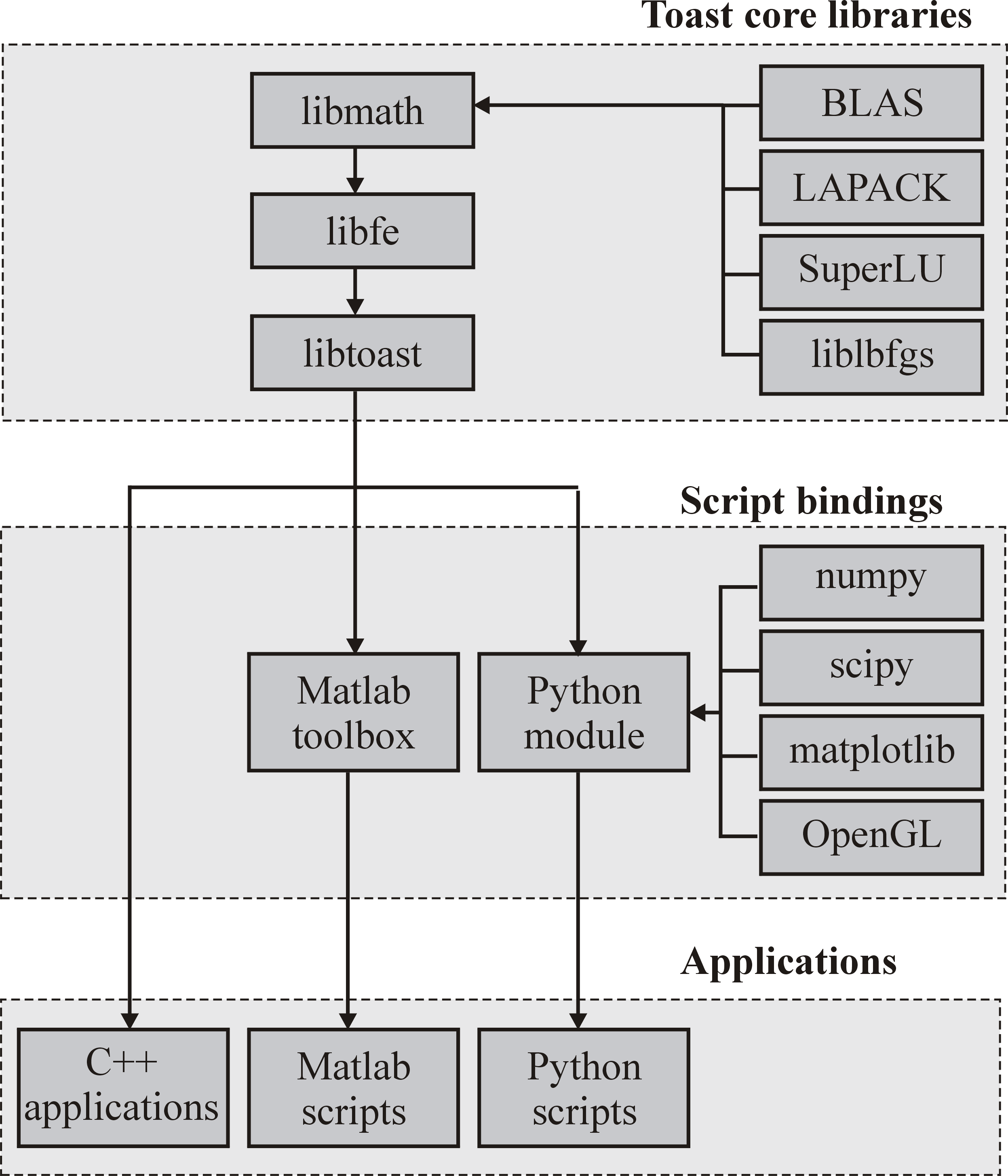 |
|
| Image Reconstruction in Diffuse Optical Tomography |

Toast++ library structure and dependencies |
Introduction to Toast++Toast++ is a collection of programs for the simulation of light transport in highly scattering media (the forward model), and the reconstruction of the spatial distribution of absorption and scattering coefficients from time-resolved transillumination measurements at the boundary (the inverse model). Toast's primary application is in medical optical tomography, and it has been developed alongside the UCL multichannel data acquisition system (MONSTIR). Toast uses the finite-element method (FEM) to model diffuse light transport in tissue, and employs efficient methods to obtain integral transforms of the temporal response signal without the need for explicit temporal sampling (although methods for the generation of full temporal profiles are available). The inverse solver iteratively computes updates to an initial distribution of the absorption and scattering parameters using either Newton-type (Levenberg-Marquardt, ART, Block-ART) or gradient-type methods (nonlinear conjugate gradients). It can be used for either single or dual parameter reconstructions. Some basic pre- and postprocessing tools are provided, such as an interactive 2D mesh generator, tools for creating simple 3D meshes, and a nodal image viewer. Main features
|